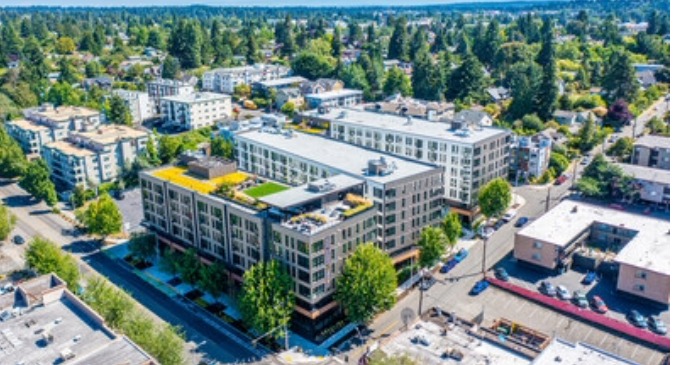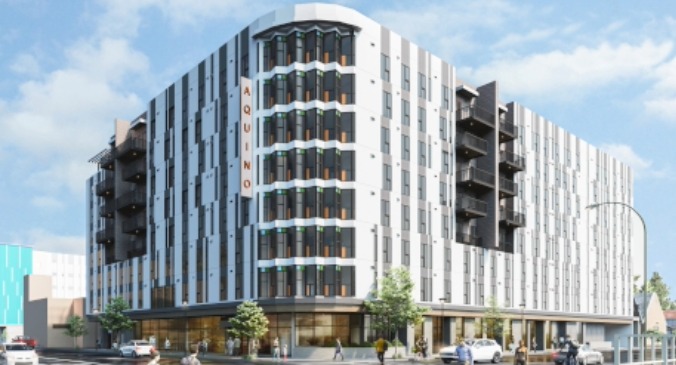If voters opt yes on Prop 10, we can say hello to new—and, frankly, aggressive—rent control regs in California. Local municipalities would have the ability to put rent caps on all rental properties—single family, multifamily and condominiums—without any restrictions. Simply translated: A city would be able to put rent caps on new construction and limit what an owner can charge for rent forever—even after a resident moves out.
This is nothing short of an existential threat to the multifamily industry, posing a greater risk than any issue the industry has faced in decades.
Support for new rent control measures already have been accelerating in places like Chicago, Denver, Seattle and Portland; a win in California only gives them more fuel. But to be successful in stopping these advancements, we need more engagement and support from you.
What you need to do now
There’s a long history to the battle over rent control, one that dates to the 1970s and the beginnings of NMHC. Given that NMHC was expressly formed in 1978 to fight back against rent control measures that had, at the time, spread to 35 states, we are fully in the mix this time around. And let me tell you, it’s shaping up to be a bloody, expensive fight.
Behind the pro-Prop 10 efforts is Michael Weinstein, president of the AIDS Healthcare Foundation. In addition to having deep pockets to support the initiative, Weinstein has a proven track record of advancing his social causes. And his plan of attack is to turn the lack of affordable housing into a social justice issue, even though the laws of supply and demand are firmly at work.
NMHC, along with industry partners NAA and others, are working with industry leaders in California to fight back against the ballot initiative and the misrepresentations that rent control—a proven failed policy—can do anything to fix California’s housing affordability challenges.
At the center of our efforts is the No on Prop 10 campaign, which focuses on the fact that Prop 10 would make the state’s housing affordability crisis worse. While a broad coalition of seniors, building trade unions, the business community, veterans, and property owners have banded together to defeat Prop 10, we still need more support from you. Time is running out.
Please support the work with a donation to help fund the campaign. Suggested donations are $100 per unit for those with properties in California and $5 per unit for those outside the state, because this proposal will ultimately hurt everyone.
This ask might seem like a lot. And admittedly it is. But these rent control initiatives will end up costing the industry one way or another, if we don’t win.
Here’s some easy math. The rent cap in San Francisco is 60 percent of CPI, or 1.6 percent. On a $1,000 per month lease, the difference between a 3 percent rent increase and 1.6 percent is $168. Spread that across a portfolio and the effects of a statewide push for San Francisco-style rent control are harsh. Such caps will severely limit apartment owners’ ability to invest, operate and refinance in a rising cost environment.
Find better solutions for the future
While the ballot fight in California is taking center stage given that there are just a few weeks before Nov. 6, this is a broader issue. With that in mind, NMHC and NAA are in the process of developing a new, wide-ranging initiative to push back on rent control across the country and surface real policy solutions. More information on this effort will be released over the coming weeks.
In the meantime, NMHC is gathering up resources and tools to help inform decision-makers and aid members in their engagement on this issue.
Beyond defeating these short-sighted and overly aggressive initiatives, our industry needs to be front and center in the exploration of solutions to the affordability crisis. This crisis is multilayered and in no small way attributable to decades of under building, restrictive regulations, NIMBYism and the high costs of land and construction. But the bottom line is this: It’s real and people are suffering.
We at NMHC are dedicated to identifying realistic and meaningful solutions and advocating for their adoption. We need to put the onus back on local governments to pare unnecessary regulations and policies, utilize land and physical assets for affordable housing, and, most of all, pave the way for the private and public sectors to partner together and to build more housing units at all price points.
Later this fall, NMHC will release a report that will illustrate that there are far better alternatives than rent control and mandatory inclusionary zoning when municipalities try to address their local housing challenges. I hope this report will be helpful to those of you who are trying to engage policy makers in more productive discussions about solving our nation’s affordability crisis.
Author: Doug Bibby is president of the National Multifamily Housing Council in Washington, D.C.
The NMHC rent control resource center has the latest news, advocacy resources and research on the issue, including an interactive map of rent control by state and a recent report that examines existing rent control research (nmhc.org). WeAreApartments.org also has great information on housing demand and supply, as well as barriers to construction, for the nation, as well as all 50 states and 50 metro areas.
















